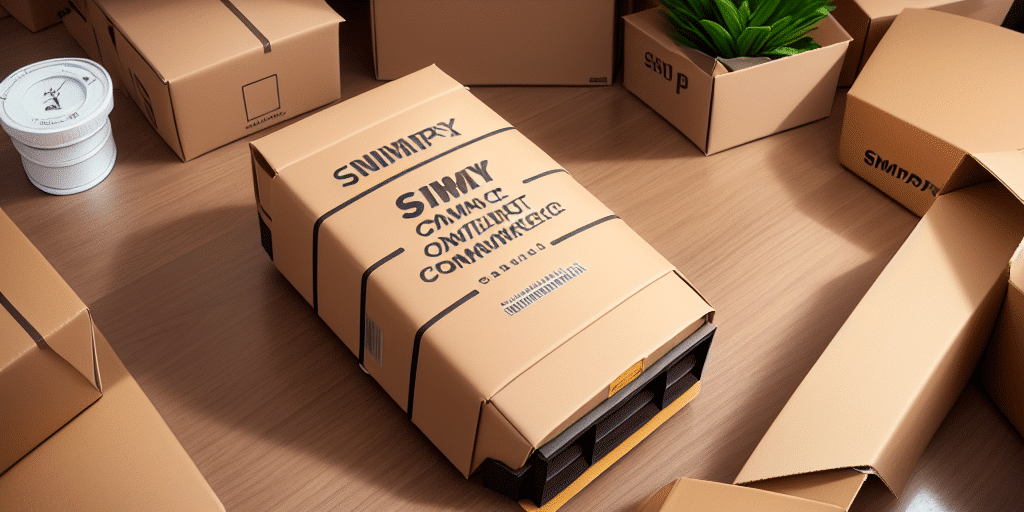How to Connect, Optimize, and Manage Last-Mile Delivery Service Optimization (LSO) for Shopify
As an ecommerce entrepreneur, improving your online store's performance is paramount. One critical aspect often overlooked is the efficiency and reliability of the order fulfillment process. This is where Last-Mile Delivery Service Optimization (LSO) becomes essential. In this comprehensive guide, we will delve into everything you need to know about LSO, its benefits, and how to connect, optimize, and manage it for Shopify.
Understanding LSO and Its Importance for Shopify
LSO refers to the optimization of the final leg of the delivery process, bridging the gap between the fulfillment center and the customer's doorstep. This involves selecting the most efficient routes, choosing appropriate transportation modes, and ensuring timely deliveries. In the context of ecommerce, effective LSO can significantly enhance customer experience, boost retention, and drive sales. For Shopify store owners, integrating LSO is crucial for maintaining a competitive edge in a rapidly evolving market.
One of the primary benefits of LSO for Shopify store owners is the ability to offer faster delivery times. With the increasing demand for same-day and next-day delivery options, customers expect swift and reliable shipping. Optimizing the final delivery stage allows store owners to meet these expectations, enhancing the overall shopping experience.
Moreover, LSO plays a vital role in reducing the environmental impact of ecommerce operations. By selecting the most efficient routes and transportation methods, store owners can minimize their carbon footprint, appealing to eco-conscious consumers who prioritize sustainability in their purchasing decisions.
Benefits of LSO for Shopify Stores
Enhanced Delivery Speed
Implementing LSO enables Shopify store owners to offer expedited delivery options, such as same-day or next-day delivery. This not only meets customer expectations but also increases the likelihood of repeat purchases.
Cost Reduction
Optimizing last-mile delivery routes and transportation modes can lead to significant cost savings. By reducing fuel consumption and minimizing delivery times, businesses can lower their overall shipping expenses.
Improved Customer Satisfaction
Timely and reliable deliveries contribute to higher customer satisfaction and retention rates. Providing accurate tracking and ensuring on-time arrivals build trust and loyalty among customers.
Environmental Sustainability
Efficient LSO practices help reduce the environmental impact of shipping operations. By choosing greener transportation options and optimizing delivery routes, businesses can lower their carbon footprint, appealing to environmentally conscious consumers.
Data-Driven Insights
LSO systems often provide real-time tracking and analytics, allowing store owners to monitor performance metrics such as delivery times, costs, and customer satisfaction. These insights enable continuous improvement and informed decision-making.
How to Connect and Integrate LSO with Shopify
Connecting LSO with Shopify involves a series of straightforward steps to ensure seamless order fulfillment and delivery optimization:
- Select an LSO Service Provider: Choose a provider that offers robust integration with Shopify and aligns with your business needs.
- Sign Up and Connect: Register for the LSO service and link it to your Shopify store through the provided integration tools.
- Configure Shipping Settings: Adjust your shipping configurations to include LSO options, setting appropriate rates and delivery zones based on the provider's offerings.
- Integrate Tracking Systems: Ensure that the LSO system is seamlessly connected to your Shopify order fulfillment process, enabling real-time tracking updates.
- Test the Integration: Conduct thorough testing to verify that the LSO integration functions correctly, ensuring smooth operations.
LSO services offer a variety of shipping options, including same-day, next-day, and two-day delivery. This flexibility allows you to cater to diverse customer needs and preferences. Additionally, real-time tracking information provided by LSO services can be accessed directly through your Shopify dashboard, ensuring transparency and reliability in the delivery process.
Best Practices for Optimizing LSO on Shopify
Select the Right LSO Provider
Choose an LSO service provider that aligns with your specific business requirements, such as delivery speed, geographic coverage, and cost-effectiveness.
Offer Multiple Shipping Options
Provide customers with a range of shipping choices, including various LSO services, to accommodate different needs and preferences.
Set Competitive Shipping Rates
Configure shipping rates that are both competitive and reflective of the delivery speed and reliability offered by your LSO provider.
Provide Accurate Tracking Information
Ensure that customers have access to precise tracking details, fostering trust and enhancing their overall shopping experience.
Optimize for Mobile Devices
With a growing number of customers shopping via smartphones and tablets, ensure that your website is mobile-friendly, with a streamlined checkout process and fast loading times.
Regularly Evaluate Performance
Continuously assess the performance of your LSO provider based on customer feedback and key performance metrics to identify areas for improvement.
Communicate Clearly with Customers
Highlight the benefits of LSO services, such as faster delivery times and reliable shipping, to educate and encourage customers to choose these options.
Common Mistakes to Avoid When Managing LSO on Shopify
- Choosing the Wrong Provider: Selecting an LSO service that doesn't align with your business needs can lead to inefficiencies and increased costs.
- Poor Configuration of Shipping Settings: Incorrect shipping configurations can result in order fulfillment errors and customer dissatisfaction.
- Limited Shipping Options: Offering only a few shipping choices can restrict your customer base and reduce sales potential.
- Inaccurate Tracking Information: Providing unreliable tracking details can frustrate customers and erode trust in your store.
- Neglecting Performance Evaluation: Failing to regularly assess and update your LSO provider can lead to missed opportunities for optimization.
Additionally, it's crucial to communicate clearly with customers about shipping expectations, including delivery times and potential delays. Transparent communication helps prevent misunderstandings and enhances customer satisfaction. Furthermore, optimizing packaging and using appropriate shipping materials can reduce costs and prevent damage to products during transit.
The Future of LSO and Its Impact on Shopify Stores
As ecommerce continues to grow, the role of LSO in order fulfillment will evolve with emerging trends and technologies. Key future trends in LSO that will impact Shopify stores include:
- Expansion of Same-Day and Next-Day Delivery: Increasing demand for rapid delivery will drive the adoption of more efficient LSO practices.
- Use of Drones and Autonomous Vehicles: Advanced delivery technologies will enhance speed and reduce costs associated with last-mile delivery.
- Predictive Analytics: Leveraging data analytics to forecast delivery routes and times will further optimize the delivery process.
- Integration with Blockchain and AI: Utilizing blockchain for secure transactions and AI for improved tracking and route optimization will enhance the reliability and security of deliveries.
Staying abreast of these trends and continuously optimizing your LSO processes will ensure that your Shopify store remains competitive, providing exceptional customer experiences that drive sales and foster growth.
Maximizing ROI with Effective LSO Management on Shopify
To maximize return on investment (ROI) through effective LSO management on Shopify, consider the following strategies:
- Choose the Right LSO Provider: Select a provider that offers the best balance of cost, speed, and reliability to meet your business objectives.
- Optimize Shipping Settings: Configure your shipping options based on customer preferences and market competition to enhance appeal and efficiency.
- Integrate Third-Party Tools: Utilize inventory management, automated shipping labels, and shipping analytics tools to streamline and automate your fulfillment processes.
- Continuous Evaluation: Regularly review and optimize your LSO processes based on performance metrics and customer feedback to ensure ongoing improvement.
- Enhance Customer Satisfaction: Focus on delivering reliable and efficient order fulfillment to increase customer loyalty and repeat business.
By implementing these strategies, Shopify store owners can ensure that their LSO processes not only enhance operational efficiency but also contribute significantly to overall business growth and profitability.
Analyzing the Impact of LSO on Your Shopify Store's Metrics
Regular analysis of LSO's impact on your Shopify store's key performance metrics is essential to gauge its effectiveness and identify areas for improvement. Important metrics to monitor include:
- Conversion Rates: Track how LSO influences the rate at which visitors become paying customers.
- Cart Abandonment Rates: Analyze whether optimized delivery options reduce the frequency of abandoned carts.
- Customer Satisfaction Ratings: Measure customer feedback and satisfaction related to delivery experiences.
- Shipping Times and Accuracy: Monitor the consistency and reliability of your delivery times and the accuracy of tracking information.
By systematically evaluating these metrics, store owners can make data-driven decisions to further enhance their LSO strategies, ensuring sustained improvement and growth.
Troubleshooting Common Issues with LSO on Shopify
While LSO offers numerous benefits, it's not without its challenges. Common issues that may arise when managing LSO on Shopify include:
- Incorrect Shipping Configuration: Misconfigured shipping settings can disrupt order fulfillment and delivery schedules.
- Tracking Inaccuracies: Inconsistent tracking updates can lead to customer frustration and decreased trust.
- Delivery Delays and Errors: Unexpected delays or delivery mistakes can harm your store's reputation and customer satisfaction.
- Customs Clearance Issues: International shipping can encounter complications with customs, leading to delays and additional costs.
- Technical Glitches: Problems with the LSO provider's system or technology can interrupt the delivery process.
To address these challenges, it's important to maintain open communication with your LSO provider, regularly update your shipping configurations, and provide clear guidance and support to customers regarding their orders. Implementing robust troubleshooting protocols can help swiftly resolve issues, minimizing their impact on your business.






















